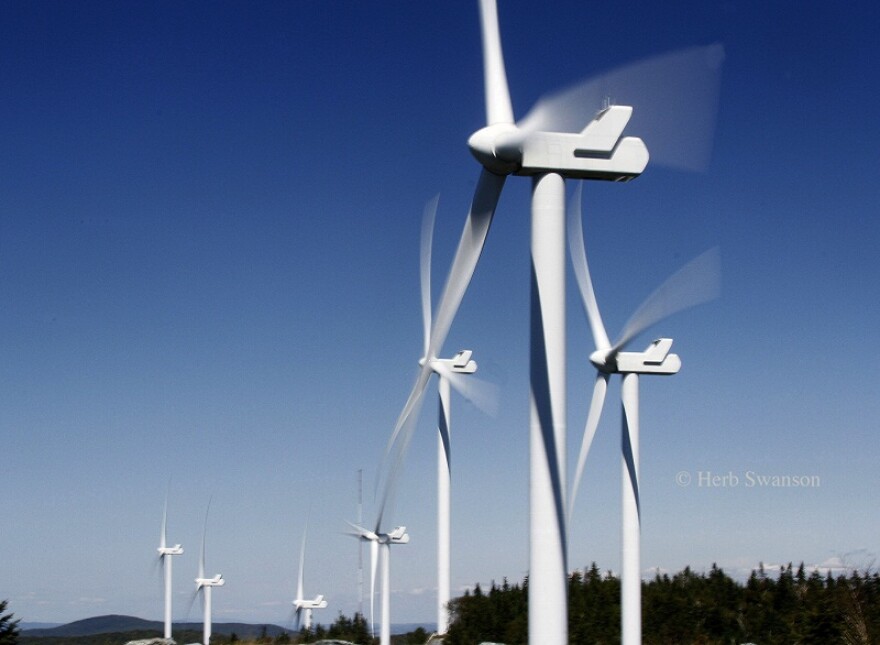The push for renewable energy has been strong in Vermont. So strong that the grid in northeast Vermont sometimes gets so overloaded that renewable energy projects are ordered offline.
A new state study says there aren't any easy solutions.
The report says the situation in the Northeast Kingdom is not a crisis, but one that regulators should monitor as they review utilities’ long-range plans.
Yet the grid issues have caused problems for developers of renewable energy projects. Last week the Vermont Public Utility Commission denied approval for a solar farm planned for Derby because of its impact on the regional grid.
"These existing [transmission] constraints have already resulted in financial harm to Vermont utilities and customers," the commission said. "The addition of the Project would increase these constraints and cause further financial harm."
The physics of the electricity grid require a constant balance between generation and demand.
That task is more difficult in the Northeast Kingdom, which is home to two large wind projects, and a major transmission link that feeds power from hydro dams in Canada. Put them all together, and there is more power going in than the region consumes.
“You have about 450 megawatts of generation in an area that only has maybe 50 megawatts of load at any given time,” said Ed McNamara, director of planning and energy resources at the Department of Public Service.
“And the transmission was built 70-80 years ago to largely bring in power to largely serve farms in the area,” he said. “They weren’t designed back then to export the power.”
"The transmission was built 70-80 years ago to largely bring in power to largely serve farms in the area. They weren't designed back then to export the power." - Ed McNamara, Department of Public Service
McNamara worked on a study that looked at the constraints on the Northeast Kingdom grid, and what might be done about it. The report says that if it’s not addressed, this transmission bottleneck could expand south to Rutland.
When the grid is overloaded, the regional grid operator can order projects to cutback, resulting in lost revenue for utilities, and potentially higher electricity costs for customers.
McNamara said the issue raises all kinds of questions. Can the area tolerate more generation? Can battery storage help absorb the excess power? Can electricity demand be boosted through greater use of electric vehicle charging stations?
“So [we’re] really trying to crack open some of the long-standing policies,” he said. “And think about can we add more nuance, can technology help alleviate some of these issues if we can better manage the load and the generation on a smaller scale?”
Green Mountain Power operates the 63-megawatt Kingdom Community Wind project in Lowell. GMP has been forced to reduce its output because of grid issues. But GMP’s Kristin Carlson said the problems were mostly resolved after the company installed expensive technology called a synchronous condenser to buffer the impact locally.
Carlson said GMP is aware of the grid constraint issue, and will not build new solar facilities without also installing battery storage.
“It can help balance out when energy is needed and most importantly it can help drive down costs, because the grid is very expensive for customers,” she said.
Vermont ratepayers have already paid about half a billion dollars over the past 15 years to improve the regional grid, and should not be on the hook for more unless it’s absolutely needed, said the state's Ed McNamara.
“What we’re really hoping is that more effective, forward-looking planning can actually help some of these constrained areas without needing to invest in infrastructure, whether it’s on the transmission or distribution system,” he said.
Update 11:05 a.m. Jan. 28, 2019 This story was updated to include news of a recent Public Utility Commission decision that denied approval for a solar project in Derby because of its impact on the already overburdened transmission grid.






